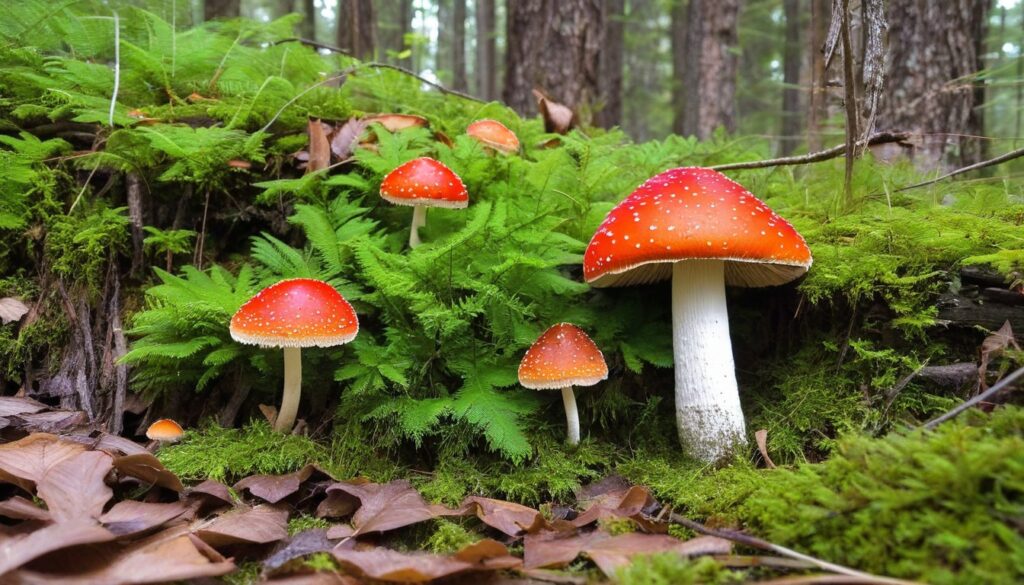Indiana’s picturesque landscapes offer the ideal environment for mushroom enthusiasts to forage and explore the vast variety of fungi. However, it’s vital to differentiate between edible mushrooms and their poisonous counterparts to ensure your safety while indulging in Indiana’s beautiful outdoors.
Indiana poisonous mushrooms can cause severe illness or even death if ingested. Therefore, it’s crucial to be able to identify them correctly. In this comprehensive guide, we will help you understand how to identify Indiana poisonous mushrooms correctly and provide essential information on safe mushroom foraging practices.
Key Takeaways:
- Identifying Indiana poisonous mushrooms is crucial for your safety while exploring the outdoors.
- Ingesting Indiana poisonous mushrooms can lead to severe illness or death.
- Proper identification and safe mushroom foraging practices are essential to eliminate the risks associated with mushroom foraging.
- Accurate identification requires an understanding of mushroom anatomy and the ability to differentiate between toxic and edible mushrooms.
- Mushroom poisoning symptoms should be recognized to seek prompt medical attention if necessary.
The Importance of Mushroom Identification
As fun and exciting as mushroom foraging can be, it’s crucial to understand the importance of proper mushroom identification. Misidentifying a poisonous mushroom can lead to severe illness or even death.
Developing the skills to identify mushrooms correctly takes time, practice, and patience. It’s important to know that not all mushrooms are poisonous, but it’s still crucial to be cautious and careful when foraging.
Mushroom Identification
Mushroom identification involves a combination of observation, knowledge, and caution. There are thousands of mushroom species, and while some are edible, others are toxic. It’s imperative to be able to differentiate between the two.
When identifying mushrooms, start by examining the physical characteristics, such as the cap, gills, stem, and spore print. Take note of the color, texture, and shape of each part of the mushroom. You can use a field guide or online resources to assist in identification.
Importance of Identification
Developing proper identification skills is essential for your well-being. Mushroom poisoning is a serious issue, and in some cases, it can be fatal. According to the National Poison Data System, there were 4,179 reported cases of mushroom exposure in 2018, with 1,329 cases requiring hospitalization.
By properly identifying mushrooms, you can avoid the risk of consuming a poisonous variety. Proper identification can also help prevent accidental poisoning of others who may come across mushrooms in the wild.
Safe Foraging Practices
Along with correct identification, it’s important to follow safe foraging practices. When foraging for mushrooms, avoid picking any specimens that you are unsure about. Be sure to collect only those mushrooms that you know are safe to consume.
Also, be mindful of where you’re foraging. Avoid areas that may have been contaminated by pesticides or other chemicals. Additionally, make sure to handle the mushrooms properly, keeping them separate from other foods to avoid contamination.
Proper mushroom identification and safe foraging practices are critical for enjoying the outdoors and staying safe while doing so. So take your time and enjoy the hunt, but always prioritize your well-being!
Understanding Mushroom Anatomy
Before you can confidently identify the mushrooms you come across, it’s essential to understand their anatomy. The main parts of a mushroom include the cap, gills, stem, and spores.
The Cap
The cap is the top part of the mushroom and can vary in shape, size, and color. The cap can be smooth or have a texture ranging from dry to slimy. Additionally, the cap margin can be straight, wavy, or scalloped.
The Gills
The gills are located on the underside of the cap and radiate out from the stem. They can be attached or free from the stem and vary in length, color, and spacing. The color of the gills can be a helpful identification tool as they can range from white to black and everything in between.
The Stem
The stem supports the cap and can range in length, width, color, and texture. Some mushrooms have a bulbous or tapered base, while others have a smooth or textured surface. The stem can also have a ring or veil, which can be important for identification.
The Spores
The spores are located on the gills and are essential for reproduction. They can vary in color, shape, and size, and can be collected for microscopic analysis to aid in identification.
By understanding the different parts of a mushroom, you’ll be better equipped to identify the mushrooms you come across in Indiana’s natural areas. Keep in mind that certain features, such as color and texture, can vary greatly depending on the species of mushroom.
Common Indiana Poisonous Mushrooms
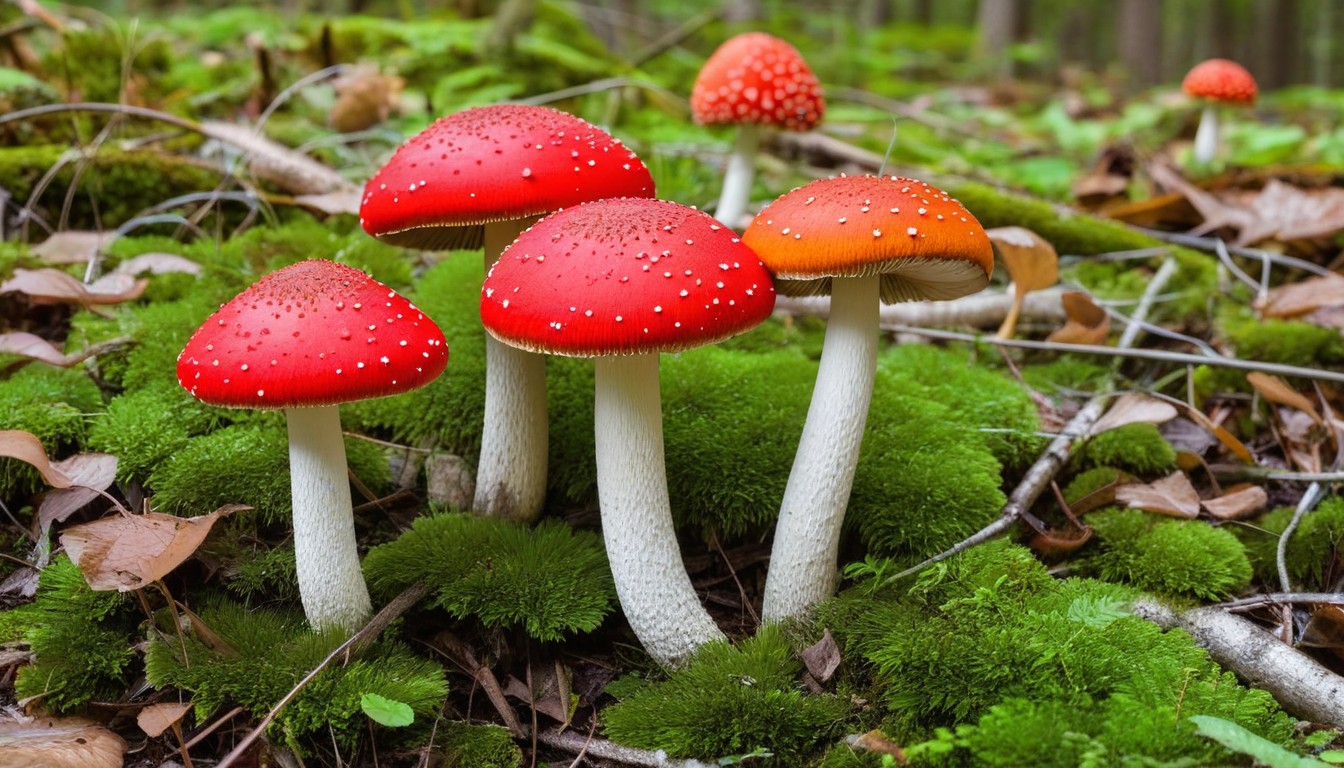
Indiana is home to various poisonous mushroom species. It’s crucial to understand their characteristics to avoid accidental ingestion. Here are some of the most common poisonous mushrooms found in Indiana:
|
Common Name |
Scientific Name |
Distinguishing Features |
|---|---|---|
|
Death Cap |
Amanita phalloides |
Smooth white cap, white gills, bulbous base |
|
Destroying Angel |
Amanita bisporigera |
White, smooth cap, white gills, bulbous base |
|
False Morel |
Gyromitra esculenta |
Irregular, brain-like cap, wrinkled cap surface, hollow stem |
|
Jackson’s Stropharia |
Stropharia coronilla |
White spores, grayish-brown cap, yellowish stem with white ring |
These mushrooms may also have other common names, and it’s important to know their scientific names to ensure accurate identification.
If you are unsure about the identification of a mushroom, do not consume it. It’s better to err on the side of caution and avoid ingesting a potentially deadly mushroom.
Differentiating Toxic and Edible Mushrooms
Learning how to differentiate between toxic and edible mushrooms is crucial to ensure your safety. While there is no universal rule of thumb, there are key characteristics to look out for:
- Cap shape and color: In general, toxic mushroom caps tend to be brightly colored or have unusual shapes. Edible mushroom caps are typically more subdued in color and have a traditional “mushroom” shape.
- Gill attachment: The attachment of the gills to the stem of the mushroom can also be a useful identifier. In many toxic mushrooms, the gills are either not attached to the stem at all or are only slightly attached.
- Gill color: The color of the gills can also be a useful identifier. Toxic mushrooms may have gills that are brightly colored or have a distinct pattern.
- Stem texture: The texture of the stem can provide clues about the mushroom’s toxicity. Many toxic mushrooms have stems that are fibrous or tough.
It’s important to note that some toxic mushrooms closely resemble edible varieties, so it’s always best to err on the side of caution. When in doubt, do not consume the mushroom.
Tip: Invest in a good field guide and take it with you when foraging for mushrooms. A guide can help you make an accurate identification in the field.
Signs and Symptoms of Mushroom Poisoning
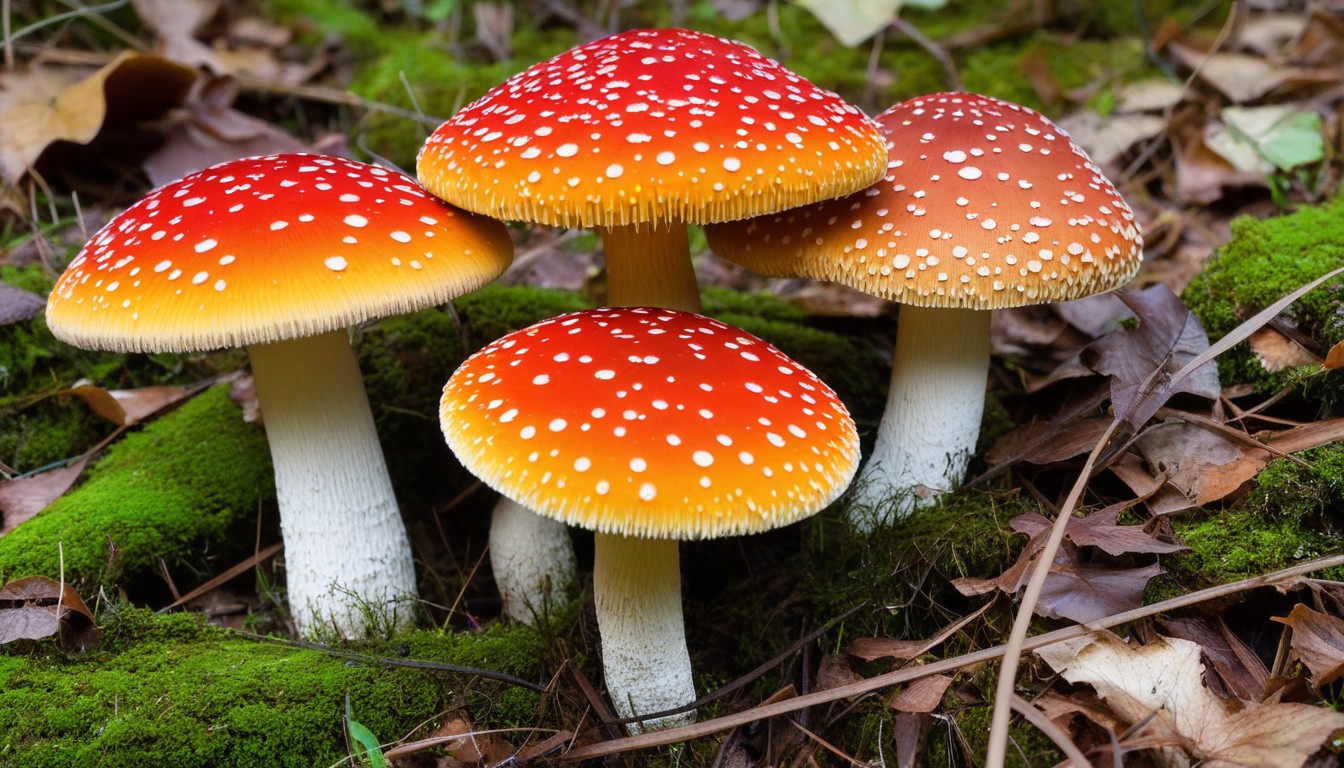
It’s crucial to be able to recognize the signs and symptoms of mushroom poisoning. The effects of ingesting toxic mushrooms can range from mild gastrointestinal discomfort to life-threatening organ failure.
The onset of symptoms can occur as soon as 30 minutes or as long as 24 hours after ingestion. Common symptoms include:
- Abdominal pain
- Nausea and vomiting
- Diarrhea
- Dizziness
- Confusion
- Loss of coordination
- Seizures
- Hallucinations
- Jaundice
Some mushroom toxins can also cause liver and kidney damage, leading to more severe symptoms such as:
- Difficulty breathing
- Coma
- Death
If you suspect that you or someone you know has ingested a poisonous mushroom, seek medical attention immediately. Early treatment can improve the chances of a successful recovery.
Safe Mushroom Foraging Practices
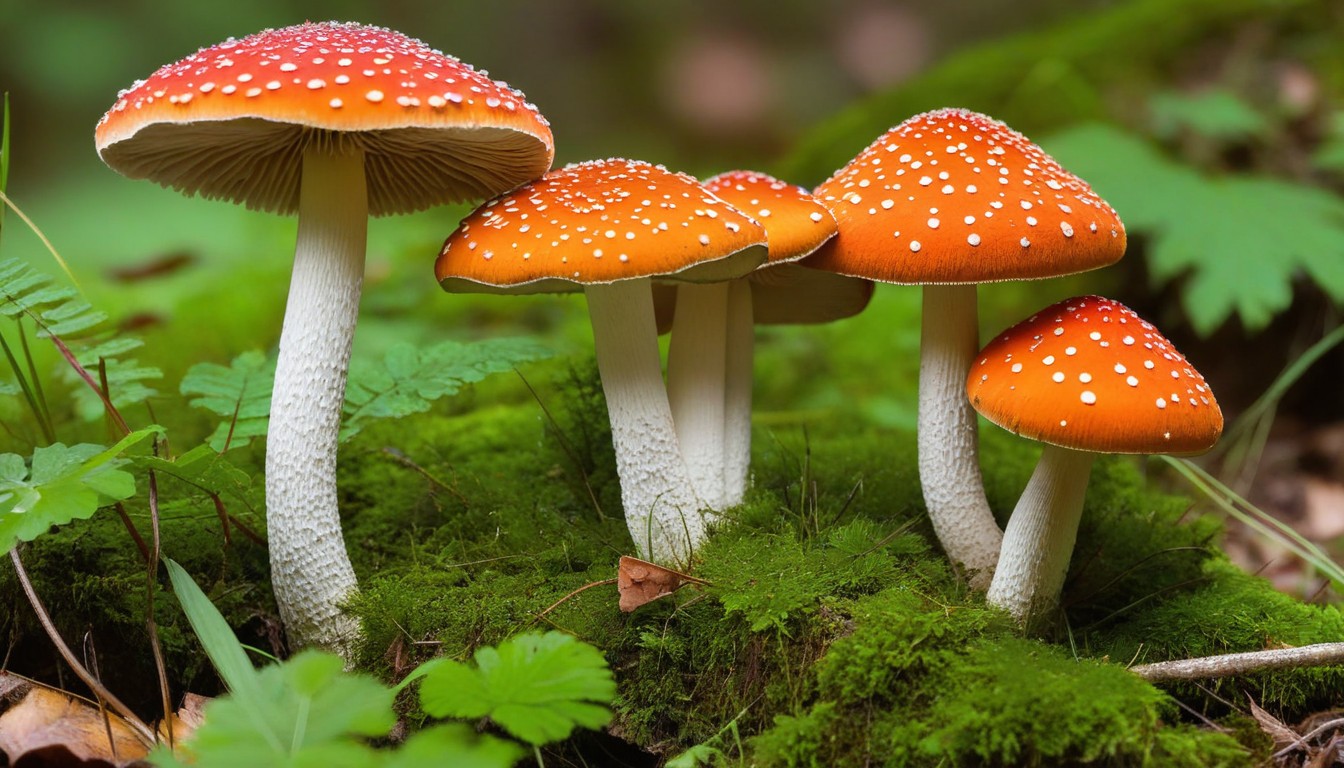
Foraging for mushrooms is an exciting and rewarding activity. However, it’s important to follow safe practices to avoid the risk of mushroom poisoning. Here are some tips to ensure a safe mushroom foraging experience:
- Know your mushrooms: Before you go out, research the types of mushrooms that grow in your area and become familiar with their distinguishing features. This knowledge is essential for avoiding toxic look-alikes.
- Stay on designated trails: Stick to well-traveled paths and avoid areas that have been sprayed with pesticides or herbicides. Mushroom picking in these areas can be dangerous due to chemical contamination.
- Wear protective gear: Wear gloves and long sleeves to protect your hands and arms from any poisonous plants or insects. It’s also a good idea to wear sturdy boots to protect your feet.
- Use a basket: Use a basket instead of a plastic bag for collecting mushrooms. This allows the spores to scatter and ensures the growth of more mushrooms in the future.
- Inspect each mushroom: Inspect every mushroom you pick, looking for visible signs of decay or insect infestation. Discard any that appear suspicious, even if you’re unsure whether they’re toxic.
- Don’t rely solely on online resources: While online mushroom identification resources can be helpful, they’re not always accurate. Always cross-reference your findings with a reputable field guide or consult with an expert mycologist before consuming any mushroom.
- Start small: If you’re new to mushroom foraging, start by collecting small amounts and only consuming a small portion of any new species. This allows you to test your tolerance and limit your exposure to any potential toxins.
By following these safe mushroom foraging practices, you can enjoy the excitement of exploring Indiana’s vast mushroom habitats without putting yourself in danger. Happy hunting!
Resources for Mushroom Identification
Identifying mushrooms can be challenging, even for experienced foragers. Luckily, there are various resources available to assist in mushroom identification. Here are some mushroom identification resources to consider:
Field Guides
Field guides are books that provide detailed information about different species of mushrooms, including their physical characteristics, habitat, and toxicity. They often contain high-quality photographs or illustrations to aid in identification. Some popular mushroom field guides include:
|
Field Guide |
Author |
|---|---|
|
North American Mushrooms |
Alan Bessette, Arleen Bessette, and David Fischer |
|
Edible Wild Mushrooms of North America: A Field-to-Kitchen Guide |
David W. Fischer and Alan E. Bessette |
|
Mushrooms Demystified |
David Arora |
Online Communities
Online communities are a great resource for connecting with other mushroom enthusiasts and experts. These platforms allow members to share photos, ask for identification help, and discuss all things mushroom-related. Some popular online mushroom communities include:
- The Great Morel: This website features a forum for mushroom hunters to share their experiences and ask for identification help.
- iNaturalist: This app and website allow users to upload photos of mushrooms and other organisms for identification by a community of experts.
- Shroomery: This website features a forum with discussions on mushroom identification, cultivation, and more.
Mushroom Identification Apps
In addition to online communities, there are several apps available to help with mushroom identification. These apps use visual recognition technology to identify mushrooms based on photos. Some popular mushroom identification apps include:
- Picture Mushroom: This app uses machine learning to identify mushrooms based on photos.
- Mushroom Identify: This app features a database of over 1,000 mushrooms and provides information on their edibility.
- Wild Edibles: This app includes information on over 1,000 wild edibles, including mushrooms, along with identification tips and recipes.
By utilizing these resources, you can increase your knowledge and confidence in identifying mushrooms in Indiana’s natural areas. However, it’s important to remember that these resources should be used as a supplement to your own research and observations. Always exercise caution and follow safe foraging practices to avoid mushroom poisoning.
Toxic Look-Alike Mushrooms
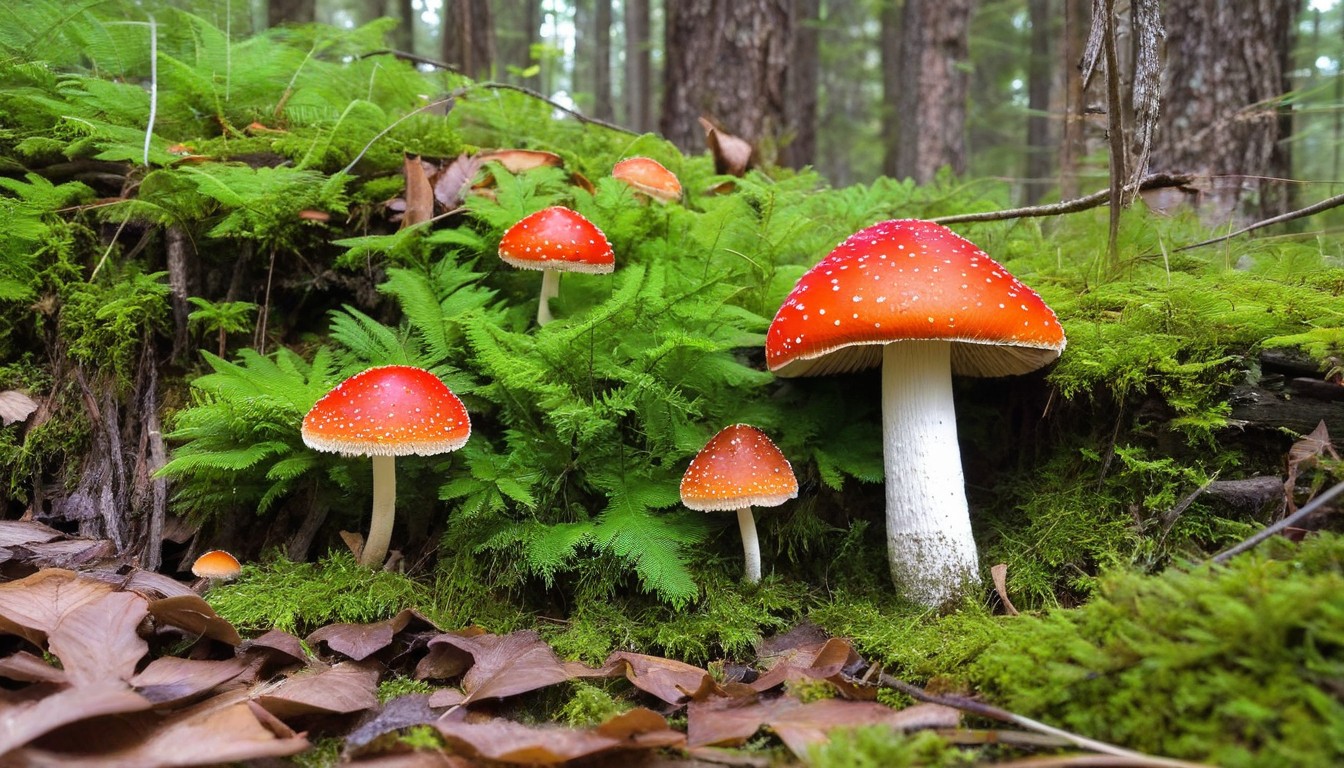
Identifying mushrooms can be tricky, even for experienced foragers. It’s essential to be aware of toxic look-alike mushrooms as they can be easily mistaken for edible ones, leading to serious illness or death. Let’s take a closer look at some common toxic look-alikes:
|
Mushroom |
Toxic Look-Alike |
Distinguishing Features |
|---|---|---|
|
Chanterelle (edible) |
False chanterelle |
The false chanterelle has true gills running down its stem, while the chanterelle has ridges that run down its stem. |
|
Morel (edible) |
False morel |
The false morel has a cap that hangs down like a bell and an irregularly shaped stem, while the morel has a cap that is uniformly shaped and attached to the stem. |
|
Hen-of-the-woods (edible) |
Black staining polypore |
The black staining polypore has a dull brown or black cap, while the hen-of-the-woods has a light brown cap with a ruffled appearance. |
It’s crucial to carefully examine the physical features of mushrooms, including the cap shape, stem, gills, and spores, to differentiate toxic and edible species accurately. If you’re unsure about a mushroom’s identification, always err on the side of caution and avoid consuming it.
“When in doubt, throw it out.”
Remember, even a small nibble of a poisonous mushroom can be deadly, so be sure to educate yourself and approach mushroom foraging with caution.
Mushroom Poisoning Treatment and Prevention
Accidentally ingesting poisonous mushrooms can result in severe illnesses and, in some cases, can even be fatal. Therefore, seeking immediate medical attention is crucial in case of mushroom poisoning.
If you suspect that you or someone else has ingested poisonous mushrooms, call 911 or the Poison Control Center right away. Do not wait for symptoms to appear.
Treatment
There is no universal treatment for mushroom poisoning as it depends on the type of mushroom ingested and the severity of symptoms.
If the patient is conscious and not showing any severe symptoms, the healthcare provider may induce vomiting or use activated charcoal to prevent absorption of toxins. In cases of severe poisoning, hospitalization may be necessary.
Some mushrooms can cause liver damage, and in such cases, a liver transplant might be necessary.
Prevention
Prevention is always better than a cure. The best way to prevent mushroom poisoning is to avoid consuming wild mushrooms.
Only eat mushrooms that you can identify confidently. Always double-check the identification of the mushroom before consuming it, using reputable resources and asking experts if necessary.
If you are foraging for mushrooms, follow safe practices, including wearing protective gloves and clothing. Only pick mushrooms that are in good condition and avoid eating anything that looks old or decayed.
Finally, keep mushroom-related products away from children, especially those under the age of six. It’s also essential to store mushrooms correctly, refrigerated and not for an extended period.
Mushroom-Related Safety Tips
Exploring mushroom habitats in Indiana can be a fun and rewarding activity, but it’s important to keep safety in mind. Here are some essential mushroom-related safety tips to follow:
- Always assume a mushroom is poisonous until proven otherwise. Even if a mushroom looks similar to an edible species, it’s better to err on the side of caution and avoid consuming it.
- Wear proper clothing and gear. Avoid wearing sandals or open-toe shoes, as well as shorts. Instead, opt for closed-toe shoes and long pants to protect against insect bites and scratches from branches or undergrowth. Wearing gloves can also be helpful when handling mushrooms.
- Don’t pick mushrooms near roads, industrial sites, or areas where herbicides or pesticides are used. Mushrooms can absorb toxins from their environment, so it’s essential to forage in clean, safe areas.
- Avoid disturbing the mushroom habitat. Don’t remove mushrooms that you don’t intend to consume, and avoid stepping on or damaging the surrounding vegetation. Be respectful of the natural area and leave it as you found it.
- Don’t blindly follow online identification guides. While online resources can be helpful, they can also be inaccurate or out of date. Double-check any identification with multiple sources or an expert before consuming a mushroom.
- Teach children about mushroom safety. If you’re bringing children along on a mushroom hunting trip, make sure they understand not to touch or consume any mushrooms without an adult’s guidance. Teach them to respect nature and its inhabitants.
- Always carry a first aid kit and contact poison control immediately if necessary. If you or someone in your group ingests a poisonous mushroom, seek medical attention immediately. Be prepared and carry a first aid kit with you and the poison control information handy.
Following these mushroom-related safety tips will help ensure that your mushroom foraging experience in Indiana is not only fun and fulfilling but also safe and responsible.
Conclusion
As we conclude this comprehensive guide on identifying poisonous mushrooms in Indiana, it’s crucial to understand the importance of proper identification skills and safe foraging practices. Always remember to prioritize your well-being and seek medical attention if you suspect mushroom poisoning.
Stay Curious, Stay Safe
Exploring the world of mushrooms can be a fascinating and rewarding experience. However, it’s crucial to approach it with caution and respect for the environment. Always follow safe mushroom foraging practices, and never consume a mushroom if you’re unsure of its identification.
Spread the Word
Share your knowledge with your fellow mushroom enthusiasts and help raise awareness about the dangers of misidentifying toxic mushrooms. Remember, the key to enjoying the outdoors safely is through education and awareness.
Thank you for reading, and we hope this guide has been informative and helpful. Stay curious, stay safe, and happy mushroom hunting!
FAQ
Why is it important to identify poisonous mushrooms?
Identifying poisonous mushrooms is crucial for your safety. Consumption of toxic mushrooms can lead to severe illness or even death.
What are the key characteristics to look out for when differentiating toxic and edible mushrooms?
When differentiating toxic and edible mushrooms, look for features such as color, texture, spore color, and presence of gills or pores.
What are the common signs and symptoms of mushroom poisoning?
Symptoms of mushroom poisoning can include vomiting, diarrhea, abdominal pain, hallucinations, and organ failure. Seeking immediate medical attention is vital.
How can I safely forage for mushrooms?
To safely forage for mushrooms, ensure you are familiar with the species you are collecting, wear appropriate protective gear, and avoid consuming any mushroom without accurate identification.
What resources can assist in mushroom identification?
Field guides, online communities, and expert mycologists can provide valuable resources for accurate mushroom identification.
Are there any toxic mushrooms that resemble edible ones?
Yes, there are toxic mushrooms that have similar appearances to edible ones. It’s crucial to learn the distinguishing features and characteristics of both to avoid confusion.
What should I do if I suspect mushroom poisoning?
If you suspect mushroom poisoning, seek immediate medical attention. Do not induce vomiting or attempt to treat it on your own.
What general safety tips should I keep in mind when dealing with mushrooms?
Always handle mushrooms with caution, wash your hands after touching them, and never eat a mushroom unless you are certain of its edibility.

